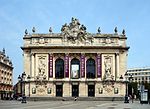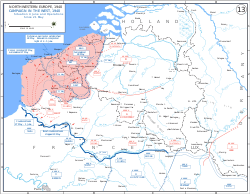Place du Général-de-Gaulle (Lille)

Place du Général-de-Gaulle is an urban public space situated in the commune of Lille, Hauts-de-France region. It is the town's historic main square. It has a grand-place style, which is typical of many cities in the former Netherlands. Until the 21st century, the square was considered to be part of the Forum mentioned in the 1066 foundation act of the collegiate church of Saint-Pierre. It is believed to have originated in the 14th century when the town's aldermen decided to turn it into a market. The Deûle was canalized, the ground gradually raised by embankments, then paved to create a market square. In the 17th century, the construction of the Vieille Bourse divided the square into Grand-Place and Petite-Place (now Place du Théâtre). After the liberation of Lille during World War II, the square was renamed in honor of Charles de Gaulle. The square is known locally as "Grand'Place" or, more rarely, "Place de la Déesse". The Place du Général-de-Gaulle continues to serve as a grand plaza for festivities, exchanges, and commercial activities, as well as various events of all kinds. It's still the heart of Lille's braderie. The book trade, with the Furet du Nord bookshop and numerous secondhand booksellers, is also important. The square is surrounded by a number of buildings, eight of which are listed as historical monuments, including the Théâtre du Nord (formerly the Grande Garde) and the Vieille Bourse (formerly the Bourse de Commerce). At the center of the square stands the Column of the Goddess. Built in 1845, it represents the heroism of the people of Lille during the siege of 1792.
Excerpt from the Wikipedia article Place du Général-de-Gaulle (Lille) (License: CC BY-SA 3.0, Authors, Images).Place du Général-de-Gaulle (Lille)
Place du Général de Gaulle, Lille Euralille (Lille)
Geographical coordinates (GPS) Address Nearby Places Show on map
Geographical coordinates (GPS)
| Latitude | Longitude |
|---|---|
| N 50.636944444444 ° | E 3.0633333333333 ° |
Address
Place du Général de Gaulle
59800 Lille, Euralille (Lille)
Hauts-de-France, France
Open on Google Maps









